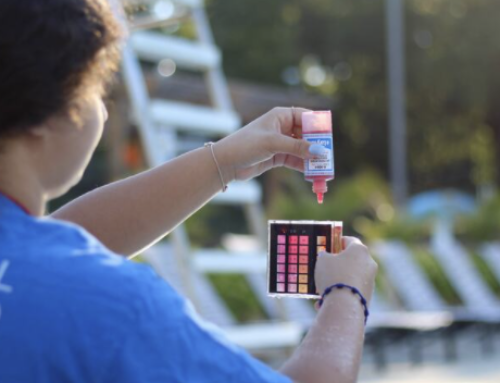Pools are a necessity in certain areas of the country that receive more sunlight or higher temperatures during warm periods of the year. Residents of Florida and Texas experience higher-than-average temperatures than the rest of the U.S., but these states rarely deal with significant droughts. California, on the other hand, routinely deals with high temperatures alongside water shortages.
Residential or commercial, pools are a facet of life throughout California, but they’re a rare topic of conversation when a drought goes into effect. How should pool management go about protecting their facilities from water loss, and how does the community react when they can no longer take care of their own pools? While droughts may seem like the enemy of commercial facilities, they might actually be the opportunity that struggling pool managers have been waiting for.
Looking into the California drought
Once the leading producer of fruits, grains and anything else agricultural, California now struggles with annual droughts that have resulted in complications such as more frequent brush fires and heightened bacteria levels in natural bodies of water. According to a report from the U.S. Drought Monitor, 99.8 percent of the state is experiencing at least a “severe” event, the third-highest classification out of five. A further 82 percent of California is under an “extreme” drought, and more than 50 percent has been in an “exceptional” drought, the most severe ranking, since the start of 2014.
The California government has taken several steps at the state and local levels to counteract the water shortage, but none have had long-lasting effects. Restrictions on the time and amount residents can water their lawns were met with derision – until police began handing out tickets for overwatering. At one point, Governor Jerry Brown called the 2014 drought “an unprecedented, very serious situation.”
“Hopefully, it will rain eventually,” Brown told the media at a January 2014 press conference, the San Jose Mercury News reported. “But in the meantime, we have to do our part.”
What part do pools play?
When discussing swimming pools and droughts, the knee-jerk reaction of many people is to call for a complete ban on the refilling and maintenance of private pools. The issue may be more complicated, though, as the San Gabriel Valley Tribune explained that more people are giving up their private pools than ever before.
Steve Espenchied is the chief executive officer of Kennah Construction, Inc., one of the thousands of individually owned contracting companies located across California. But Kennah Construction has been specializing in a particular form of in-home pool maintenance over the past few months – removals.
“As compared to a few years ago, we are definitely busier as far as filling in swimming pools,” Espenchied told the SGV Tribune. “[The drought] may be in the back of their minds somewhere.”
Espenchied said that his company fills in about two pools every week. Though this will hardly make a dent in the overall number of private pools scattered around California, it signals a growing trend among homeowners who are beginning to see private pools as an unnecessary expense rather than a luxury.
Shifting toward commercial facilities
Just because the drought is causing some families to give up on their backyard pools doesn’t mean that the entire state is trading in their flippers and snorkels. Californians still need fun ways to cool off, and the California Pool and Spa Association has taken advantage of the opportunity afforded by the drought to start the “Let’s Pool Together Campaign,” a program to get more people into community pools instead of wasting water on private facilities.
“Many people assume pools and spas waste water, but that’s just not true,” Mike Geremia, chairman of the CPSA, said in a statement. “Because pools and spas often replace traditional lawns, which are very water intensive, every pool and spa actually saves thousands of gallons of water per year. Yet even with those water savings, we know there are steps pool and spa owners can take this summer to potentially save even more.”
While the campaign includes some educational materials on ways residential homeowners can increase the efficiency of their pools, the main thrust involves marketing materials for local commercial facilities that are aimed at getting more people in public pools to reduce the overall strain on the environment.





